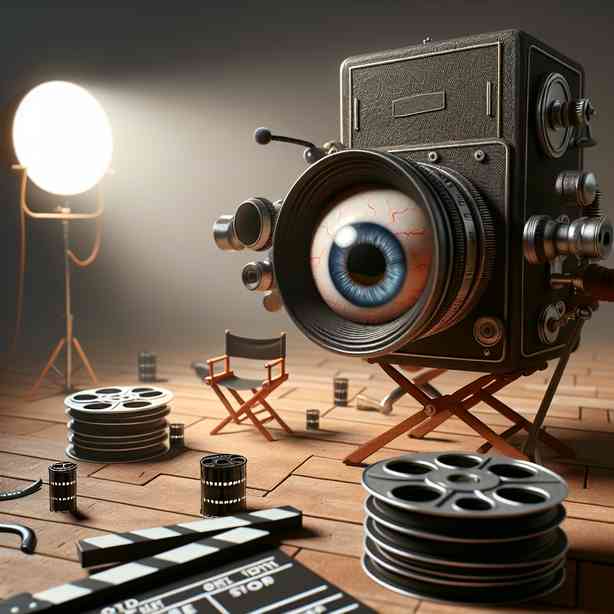
When the camera becomes a character, it transcends its conventional role as merely a tool for capturing images and instead emerges as a dynamic entity that shapes narratives, influences emotions, and interacts with the environment. This transformation signifies a profound evolution in filmmaking and storytelling, where the camera goes beyond a passive observer, taking on a persona that can impact the storyline as significantly as human characters. As we delve into this fascinating subject, we will explore how this phenomenon affects visual storytelling, engages audiences, and reshapes the relationship between viewers and the narrative.
In the world of cinema, the camera has traditionally been viewed as an objective eye, faithfully recording events as they unfold. However, filmmakers have long understood the potential of the camera to convey deeper meanings and emotions through its movements, angles, and perspectives. When the camera takes on a character-like role, it becomes an active participant in the story, deeply influencing how audiences perceive the narrative. This is evident in various cinematic techniques, such as subjective shots, where the camera adopts the point of view of a character, allowing viewers to experience their thoughts and feelings intimately.
One of the earliest examples of this technique can be found in films like Alfred Hitchcock’s “Rear Window.” In this classic thriller, the camera embodies the protagonist’s perspective, inviting the audience to engage with the story from his vantage point. As the story unfolds, viewers become almost complicit in his observations, fostering a sense of unease and tension as they witness the unfolding drama through his eyes. The camera, in this instance, becomes a character, driving the narrative forward and creating an emotional connection that is palpable.
The use of the camera as a character invites viewers not only to watch but to feel, empathize, and sometimes even question their own perceptions. This character-like agency of the camera is skillfully utilized by directors to guide viewers through complex emotional landscapes and moral dilemmas. For instance, in films like “Birdman” by Alejandro González Iñárritu, the camera is employed in a continuous, flowing manner that mirrors the protagonist’s chaotic thoughts and struggles, reinforcing the film’s themes of existentialism and the search for meaning. The camera’s movement becomes as frenetic and introspective as the character it represents, blurring the lines between reality and illusion.
Furthermore, the camera’s character-like role extends beyond the subjective viewpoint. Techniques such as the dolly zoom, commonly referred to as the “Vertigo effect,” can imbue the camera with an emotional weight, allowing it to reflect the psychological state of characters. When used effectively, such techniques can elevate tension and highlight characters’ internal conflicts, showcasing the camera’s ability not only to portray reality but also to manipulate it in service of storytelling. In this sense, the camera serves as more than just a recording device; it becomes a narrative device that evokes emotions and presents complex character dynamics.
The emergence of digital technology has expanded the means by which filmmakers can manipulate the camera’s role. With the use of drones, stabilizers, and advanced CGI techniques, filmmakers are now capable of creating entirely new perspectives that were previously unimaginable. This technological evolution has allowed the camera to move gracefully through spaces, providing audiences with immersive experiences that align closely with the narrative’s emotional undertones. Films like “Gravity” by Alfonso Cuarón illustrate this innovative approach, using long, unbroken takes that create a sense of realism and urgency, while the camera itself feels like a character navigating the vastness of space alongside the protagonists.
A significant aspect of considering the camera as a character lies in its relationship with the audience. As viewers, we often anthropomorphize objects, attributing human qualities to inanimate things. In cinema, this phenomenon is skillfully leveraged to enhance viewer engagement. The camera, when endowed with character-like agency, invites viewers to connect not only with the story but also with the medium itself. This connection becomes evident in films that experiment with breaking the fourth wall, where the camera literally looks at the audience or conveys awareness of its presence as a character. When this happens, the boundaries of storytelling dissolve, and viewers become active participants rather than passive observers.
Moreover, the camera’s ability to mimic human traits enables filmmakers to create complex interactions among characters. This character-like aspect allows filmmakers to design scenes where the camera’s movements echo the emotions of the characters, thus emphasizing their connection. For example, in “The Diving Bell and the Butterfly,” the cinematography is intentionally constrained to reflect the protagonist’s paralysis, creating a visceral and compelling narrative experience. By employing the camera as a character that shares in the characters’ emotional journeys, filmmakers amplify the dramatic weight of the story, prompting audiences to engage with the narrative on a deeper level.
The implications of a camera as a character extend into various genres, from horror to romance. In horror films, a shaky cam might reflect the fear and confusion of characters, immersing the audience in their terror. Conversely, in romantic films, a smooth, sweeping camera movement can evoke a sense of longing and connection as it glides over the landscapes and intimate moments shared between characters. The camera’s ability to embody feelings and perspectives enhances the storytelling potential across genres, showcasing the versatility of this approach.
It is essential to recognize that viewing the camera as a character poses both opportunities and challenges for filmmakers. While this technique can create rich emotional experiences, it requires a delicate balance to avoid overshadowing the narrative or alienating the audience. Filmmakers must be acutely aware of how the camera’s movements and perspectives align with character development and plot progression, ensuring that the camera serves as an amplifier for the story rather than a distraction. This meticulous crafting of the camera’s role demands a high level of creativity, technical skill, and an understanding of audience psychology.
As we consider the future of cinema, the importance of the camera as a character will likely continue to grow in significance. With advancements in virtual reality and interactive storytelling, the relationship between the camera and the narrative is becoming increasingly dynamic. Viewers are now able to influence the camera’s movements and perspectives, offering a new layer of interactivity that blurs the lines between spectator and participant. This evolution towards an interactive format presents exciting possibilities for storytelling, allowing audiences to immerse themselves in narratives where the camera feels like a trusted companion, guiding them through worlds of imagination and emotion.
In conclusion, the concept of the camera as a character enriches the landscape of storytelling by infusing narratives with depth, emotion, and engagement. Through various cinematic techniques and advancements in technology, filmmakers have demonstrated the camera’s potential to shape the viewer’s experience significantly. By allowing the camera to take on a character-like role, filmmakers enhance the connection between the audience and the story being told, creating a more immersive and compelling experience. As we move forward into an era of innovative storytelling, the interplay between the camera and narrative will undoubtedly continue to evolve, offering fresh avenues for creative expression and audience engagement.


